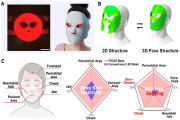- 1 Face-conforming LED mask shows 340% improved efficacy in deep skin elasticity
- 2 Leyard LED screens add flexibility to 24/7 studios at Slovakia’s TV Markíza
- 3 Samsung Onyx Enhances the Cinema Experience in One of the World’s Most Beautiful Cinemas, the Pathé Palace in Paris
- 4 Rice grown in Xinjiang desert
- 5 The Indoor Lab Selects Aeva as LiDAR Provider to Transform Safety, Security and Operational Efficiency for Major U.S. Airports and Mass Transit Applications
- 6 New Xiaomi S Pro Mini-LED TV series debuts with up to 3,200 nits peak brightness rating
- 7 GRUP MEDIAPRO unveils its latest 210SQM LED screen at their virtual production studios in Barcelona
Login |
Register |
Management | Member Center | Contact Us





 CN
TW
EN
CN
TW
EN





